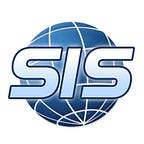Centralizing Security Monitoring Services
The security system industry is more complex than ever. Today, many comprehensive security systems combine physical and digital elements in an effort to provide clients with complete coverage.
Misalignment of individual elements can leave you at risk. Simplification is crucial to maintaining security across several remote locations and endpoints.
Centralizing your security monitoring services is essential. Unified security controls empower your team with greater visibility, real-time notifications, and more. Big picture: you cut costs, save resources, and strengthen your security.
Let’s take a closer look at the benefits of centralized security.
What Is Centralization?
Centralization concentrates distinct activities under one umbrella.
In the security monitoring space, a centralized approach collates security controls and functions. Security teams can access various capabilities and manage endpoints via a unified system.
Centralized security systems often use cloud-based technology to protect entire networks against threats.
Five Benefits of Centralized Security Monitoring Service
Centralization empowers security teams to unite separate systems:
- Alarm receivers
- Video monitoring systems
- Access controls systems
- Cloud-based systems
- Computer-aided dispatch (CAD) systems
- And more
Here are five benefits that come with centralizing your security services.
RELATED: Integrating IT and Physical Security
1. Detect Threats Across Your Network
Some threats are easy to detect. Others are subtle. Visibility is critical to identifying security concerns before they escalate.
A centralized security monitoring system gives you access to data across your network. Your software can connect many variables, such as time delays and rates of change.
2. Real-Time Notifications for Quick Response Times
A security system can send alerts when it detects a threat. Crucial security personnel can react in real-time. You can select between several notification options. This includes email and text.
Live notifications ensure a rapid response time, minimizing further damage.
3. Flexibility and Customization
Centralized security monitoring systems leverage cloud technology. This streamlines the process of scaling, expanding and customizing your solution.
If you’re building a security system from ground zero, start with the functionality you need now. In the future, you can always add new functionality. There’s no reason to build your dream security system all at once if there are options you know you won’t need until a future date.
That’s true because a modern security system can evolve as requirements evolve. Furthermore, you shouldn’t be weighed down by functionalities you won’t even use for now.
4. Simplified Procedures
More complex security monitoring systems result in more complicated security processes. Team members may not follow difficult procedures. And that puts the networks under your protection at risk.
Centralization not only improves visibility but also simplifies your system — and your processes.
A streamlined process empowers team members to become proactive and diligent. This enhances your company’s security strategy.
RELATED: How Well Have You Optimized Your Security Alarm Response?
5. Reduced Costs
Managing several networks is time-consuming and costly. What’s more, some monitoring organizations pay for the same services twice or more.
When you transition to a centralized solution, you reduce administration costs. You can also prevent overlapping services.
As a result, you may be able to curb expenses.
Three Steps to Kick-Start the Centralization Process
If your organization currently runs a decentralized security solution, the following steps will help you kick-start the centralization process.
Step 1: Know Your Needs
First, determine your needs.
For example, do you need 24/7 monitoring? What kind of features do you need? Examples include CAD integrations, video verification, and access control systems.
Your list of must-haves will inform your software selection process.
Step 2: Assess Your Communication Infrastructure
Remote monitoring via a centralized security system requires robust communication infrastructure. The general architecture of a centralized system is edge-to-core. That means each remote location must connect to your network.
You can secure your connection in one of several ways. Which is best suited to your firm will depend on several factors:
- Available bandwidth
- Existing connections
- Compliance regulations
- Specific location quirks
Step 3: Select Your Software Vendor
You know what you need and understand your infrastructure limitations. Now, you can work through your vendor selection process. The security software provider you choose should cater to your requirements. They should also hold relevant security certifications.
Other factors to consider include the following:
Core Capability
Centralized security monitoring can be complex. Look for a vendor whose key service is security.
Industry-Leading Technology
Centralized security depends on both hardware and software. Assess the technology each vendor uses to prevent weak links in your system.
Communications Process
A robust monitoring service requires reliable, prompt communication.
Feature-Rich Solutions
Centralized security monitoring is customizable. Take advantage of this benefit. Choose a vendor that offers a dynamic range of integrations and modules. When your business grows, your security systems can scale, too.
RELATED: Security and Savings with Professional Alarm Monitoring
Get Started with Centralized Security Monitoring Services Today
Centralization boosts your business’s security, enables rapid response times, and saves you money.
If you are ready to start your transition to a centralized solution, begin with the tips in this article. We also recommend that you speak directly to a security services provider who has experience supporting organizations like yours.
Your security matters. Take the time to ensure you approach the centralization process the right way.
KEEP READING: Alarm Monitoring Best Practices: Creating Efficient Processes
